 Technology peripherals
Technology peripherals
 AI
AI
 The 2022 Nature annual index is released, with China accounting for 31 of the 50 fastest growing institutions!
The 2022 Nature annual index is released, with China accounting for 31 of the 50 fastest growing institutions!
The 2022 Nature annual index is released, with China accounting for 31 of the 50 fastest growing institutions!
Just now, the 2022 Nature annual index report has been released.
Among the top 50 research institutions, the 31 institutions with the fastest growth are all in China.
In contrast, there are only two Chinese universities in the top ten in the 2021 list, namely Southern University of Science and Technology in Shenzhen and Shanghai Jiao Tong University.
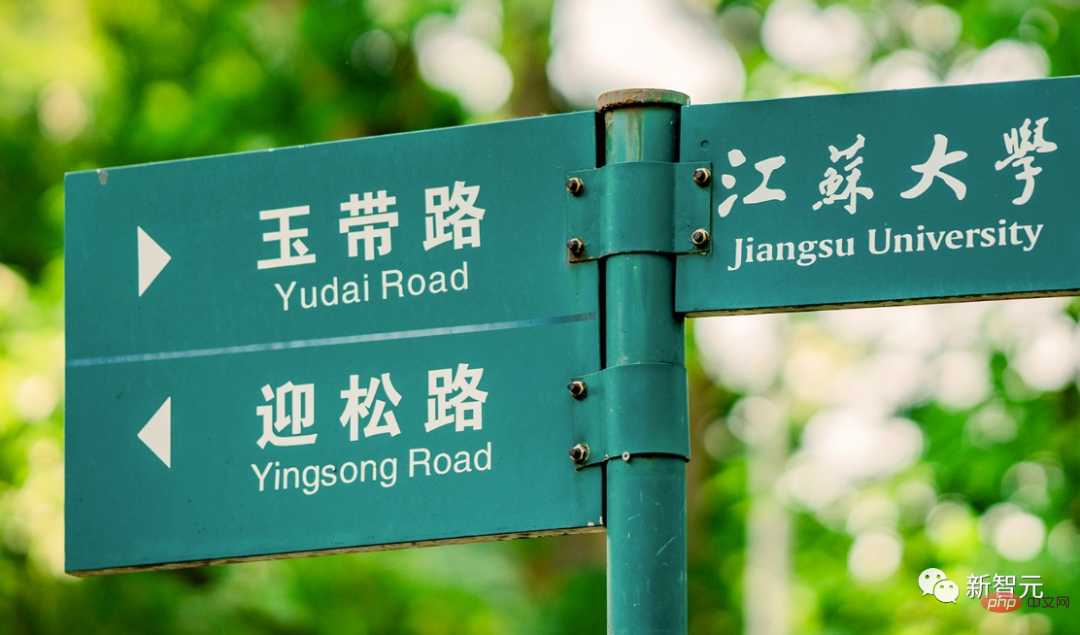 ##
##
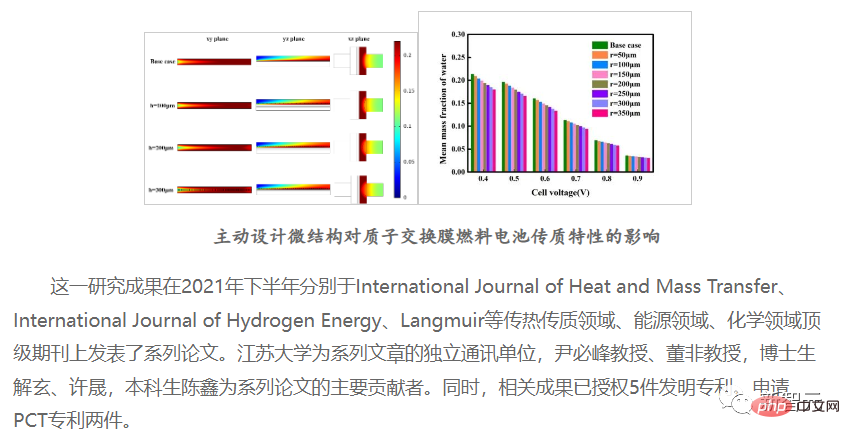
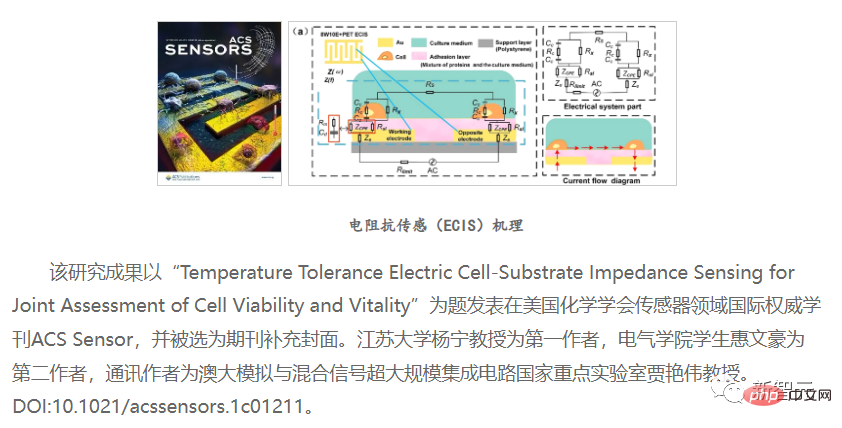
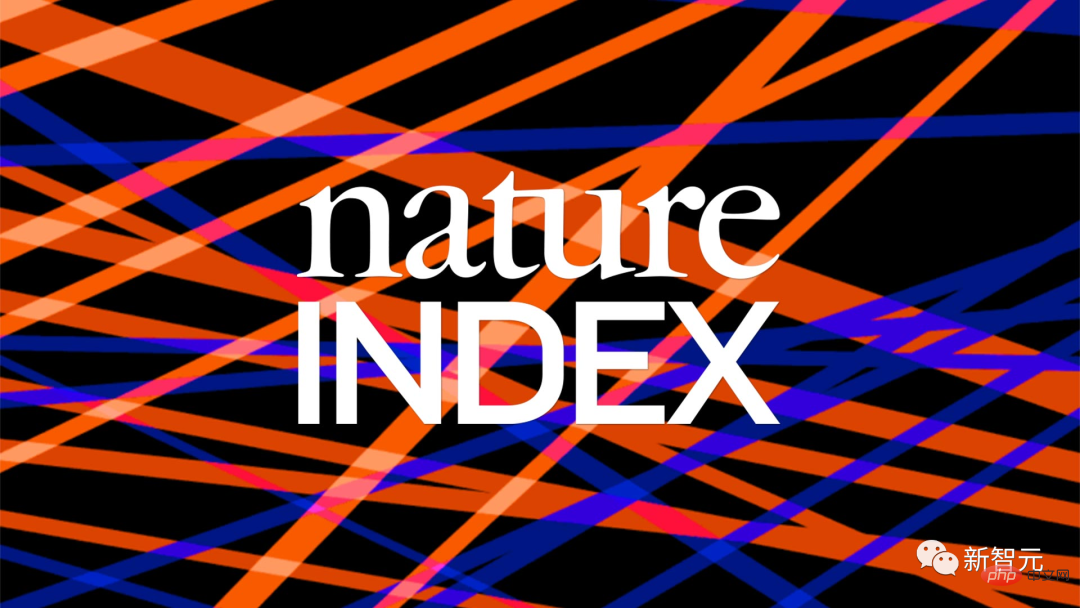
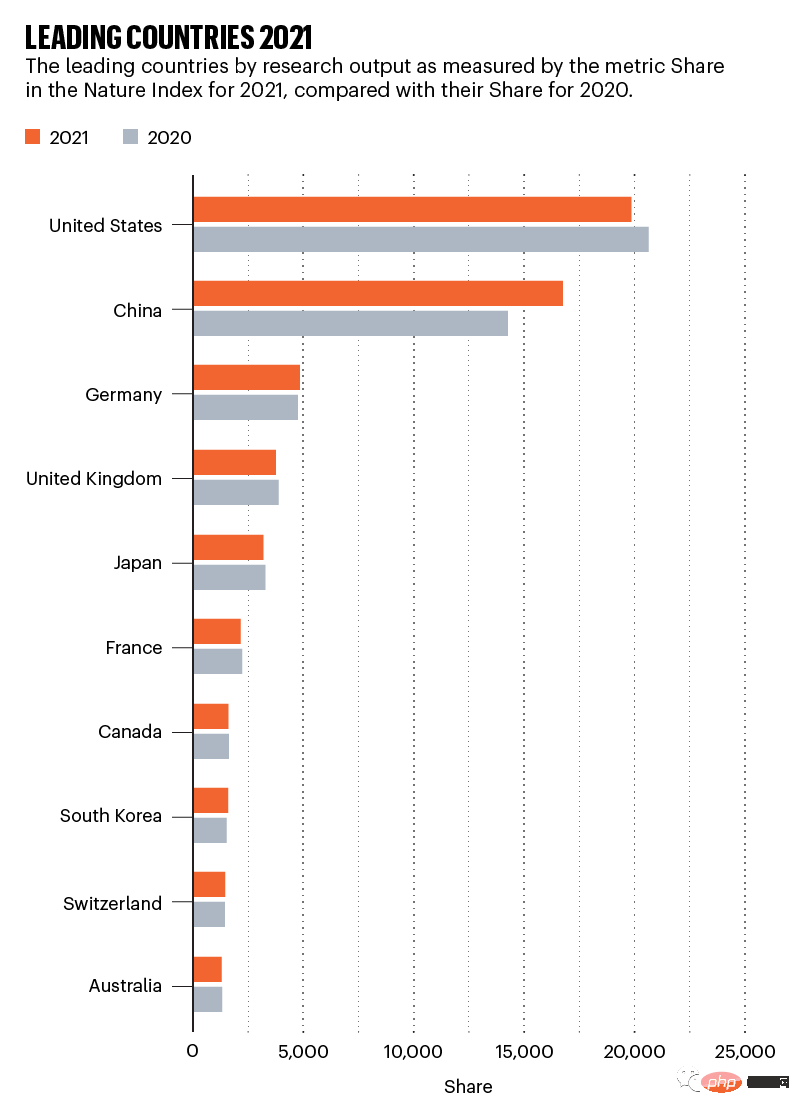
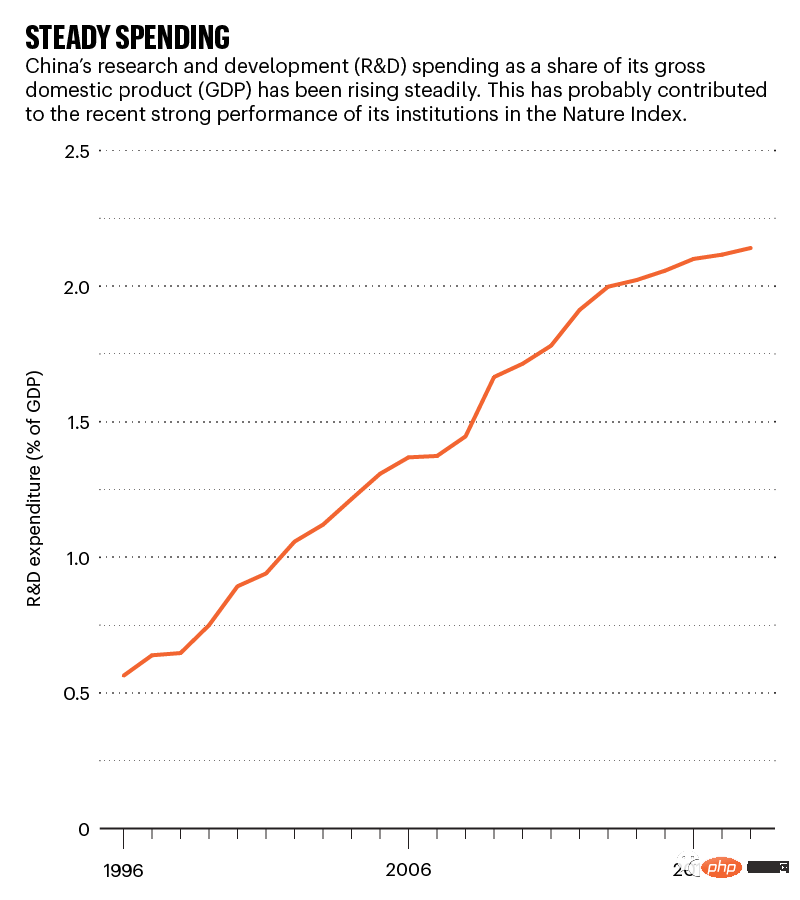
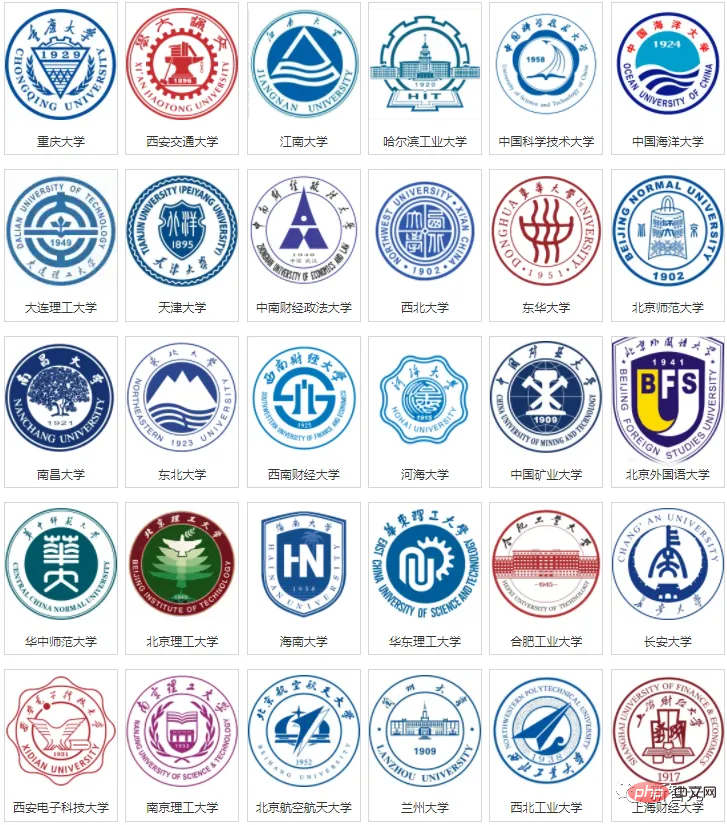
Then, in 2017, the Chinese government announced the "Double First-Class" initiative, identifying 140 universities with the potential to become world-class institutions.
Not only that, the government has also designated some disciplines and majors, determined to become a leader in the world.
Lin said, "I don't think the Double-First-Class Plan was run for any vanity purpose...Although there are definitely considerations of international reputation, the investment is real, just to develop some of China's We consider subjects that are more important, and then strive for corresponding strategic dominance."
"This is not just a matter of international rankings, but also about competition with the United States at the top strategic level."
Tsinghua University in Beijing Hamish Coates, director of higher education research at the university, said, "Sustained and adequate funding will also have a positive impact. Researchers can plan their research routes in the next few years in a methodical manner based on funding."
"Take Double First-class For example, in this strategy, the Chinese government has promised to put scientific development first, at least until 2050. This shows that the government is very clear about how scientific research is conducted."
Coates responded expressed some different views. He believes that there is a critical value in the amount of research being conducted, and once it is reached, the Chinese government's investment in scientific research will gradually decrease. Although, he does not think this phenomenon will appear in the next few years.
"This situation has occurred in traditional scientific research powers such as the United Kingdom and the United States. For example, if you invest 1 million US dollars in scientific research in the United States, the results you will achieve must be less than investing 100 million US dollars in China. Ten thousand US dollars. This is the most basic law of economics. One day, China’s investment in scientific research will also experience diminishing marginal returns.”
In the year from 2020 to 2021, China’s scientific research The proportion of institutions in Nature is rising faster than that of institutions in other countries or regions in the world. Is this a coincidence?

# Thinking more deeply, is there any relationship between the COVID-19 epidemic and this index? Lin said it's impossible to have a 100% correct answer.
"In the UK, in order to ensure the safety of students during the epidemic, the government required vigorous development of online teaching, and the government also provided a lot of support. This may be a reason for the slowdown in scientific research progress in the UK. Therefore, I can Presumably, researchers in Western countries also have other things to be busy with. However, this is just my conjecture. It is impossible for me to find data to confirm my conjecture."
"There is no relevant data to verify it. Our reasoning. We cannot say with certainty whether researchers in China are less affected by the COVID-19 epidemic than researchers in other countries. I have always been cautious about issues related to the epidemic."
Coates believes, "Whether the epidemic has affected Nature's index table, how it has been affected, and how much it has been affected, it is too early to discuss these issues. A conclusive result may not be available for a few years. In short, it cannot be unilateral. Attributing all changes to the new crown epidemic."
Then, Lin pointed out another problem. Scholars all over the world are lamenting the cultural phenomenon of “publish or be eliminated.” This means that if the results of a study are not published in any journal, then the study is destined to be eliminated.
Under the influence of this idea, it has become particularly important for researchers to publish articles in high-impact journals. This phenomenon, or trend of thought, is particularly common in China.
Also, this phenomenon may not be so troublesome in the UK. Researchers in the UK do not need many published papers to endorse themselves before starting their scientific research journey, but this is not the case in China. Students from Chinese universities must publish a certain amount of articles in journals when looking for a job. Even master's students have relevant requirements.
In addition, if Chinese students have not published a paper during their graduate studies, they will not be able to graduate.
Lin said many researchers in Western countries have decried the stress caused by this environment. Setting standards by requiring the number of published papers can create a vicious work environment.
And this pressure to publish papers can partially explain the phenomenon that China’s scientific research institutions are becoming more and more dominant and rising faster and faster.
Lin believes that China’s higher education system can take some measures to alleviate the excessive pressure of “issuing documents”. Weakening the emphasis on the number of publications can reduce the pressure on researchers, thereby increasing scientific research output.
In China, scholars basically stop doing scientific research when they reach the age of 60, and start focusing on educating students. However, in the West, 80-year-old scholars are still competing with young people for funding.
This is the difference in environment.
It is impossible to predict or explain observed trends in isolation. Without looking at it as a whole, it is difficult for us to understand why there is such a big difference between China’s Nature index this year and last year. Why are the development speeds of research institutions so different?
However, judging from the current situation, China's scientific research funding has always been sufficient. This year's strong performance may well be a harbinger of things to come.
In short, although there may be problems of one kind or another, the future is promising.
The above is the detailed content of The 2022 Nature annual index is released, with China accounting for 31 of the 50 fastest growing institutions!. For more information, please follow other related articles on the PHP Chinese website!

Hot AI Tools

Undresser.AI Undress
AI-powered app for creating realistic nude photos

AI Clothes Remover
Online AI tool for removing clothes from photos.

Undress AI Tool
Undress images for free

Clothoff.io
AI clothes remover

AI Hentai Generator
Generate AI Hentai for free.

Hot Article

Hot Tools

Notepad++7.3.1
Easy-to-use and free code editor

SublimeText3 Chinese version
Chinese version, very easy to use

Zend Studio 13.0.1
Powerful PHP integrated development environment

Dreamweaver CS6
Visual web development tools

SublimeText3 Mac version
God-level code editing software (SublimeText3)

Hot Topics
 1378
1378
 52
52
 An author of a paper is popular. When can large language models such as ChatGPT become a co-author of the paper?
Apr 11, 2023 pm 08:16 PM
An author of a paper is popular. When can large language models such as ChatGPT become a co-author of the paper?
Apr 11, 2023 pm 08:16 PM
ChatGPT has received attention since its release and is considered one of the most powerful language models currently available. Its text generation capabilities are no less than those of humans, and some machine learning experts have even banned researchers from using ChatGPT to write papers. But recently, a paper was clearly signed ChatGPT in the author column. What's going on? This paper is "Performance of ChatGPT on USMLE: Potential for AI-Assisted Medical Education Using Large Language Mo" published on the medical research paper platform medRxiv
 Authors from Tsinghua University ranked first, with more than ten manuscripts accepted by multiple people: NeurIPS 2022 statistics are released
Apr 08, 2023 pm 10:21 PM
Authors from Tsinghua University ranked first, with more than ten manuscripts accepted by multiple people: NeurIPS 2022 statistics are released
Apr 08, 2023 pm 10:21 PM
As one of the most prestigious AI academic conferences in the world, NeurIPS is an important event in the academic community every year and is usually held in December every year. The content discussed at the conference includes deep learning, computer vision, large-scale machine learning, learning theory, optimization, sparse theory and many other subdivisions. This year, NeurIPS is in its 36th year and will be held for two weeks from November 28th to December 9th. The first week will be an in-person meeting at the Ernest N. Morial Convention Center in New Orleans, USA, and the second week will be an online meeting. In late September, NeurIPS announced this year’s paper acceptance status. This year, a total of 10,411 papers were submitted from all walks of life, 2
 PubScholar public welfare academic platform has suspended its service: the number of visits has increased sharply, and efforts are being made to expand its capacity.
Nov 02, 2023 pm 06:25 PM
PubScholar public welfare academic platform has suspended its service: the number of visits has increased sharply, and efforts are being made to expand its capacity.
Nov 02, 2023 pm 06:25 PM
According to news from this website on November 2, on November 1, the PubScholar public welfare academic platform jointly built by the Chinese Academy of Sciences and other units was officially opened to the public. The number of full-text resources available for free is about 80 million, including about 2,122 full-text scientific papers. 10,000 articles, with full-text patent data of approximately 58.78 million articles. Once the platform was launched, it received great attention from the society, and the number of visits increased sharply. The current service response is slow, and the official has suspended the service, saying that it is working hard to expand the service. The official PubScholar platform also calls on everyone to use platform services rationally and prohibits the use of high-concurrency tools to access and download documents. We hope that everyone will work together to create and maintain a public welfare academic environment. The first phase of the platform integrates the scientific and technological achievements of the Chinese Academy of Sciences
 CNKI CNKI cloud version academic achievement database is officially launched to serve university libraries, scientific research offices and other institutions
Oct 25, 2023 pm 07:01 PM
CNKI CNKI cloud version academic achievement database is officially launched to serve university libraries, scientific research offices and other institutions
Oct 25, 2023 pm 07:01 PM
According to news from this website on October 25, CNKI announced today that in order to help scientific research institutions better achieve effective management and mining and utilization of results, CNKI will create a one-stop service for the preservation, management and dissemination of institutional knowledge assets. It has established the CNKI academic achievement database (institutional knowledge base), providing a full-cycle intelligent database construction platform and achievement big data application analysis tools. In addition, in order to provide lightweight and convenient academic achievement database construction solutions to institutions at different levels, CNKI has launched a cloud version of the academic achievement database. HowNet stated that the cloud version of the academic achievement database comprehensively collects and manages the academic achievement output of the institution, correlates the relationship between the results, institutions and scholars, realizes the lightweight construction and rapid implementation of the institution's academic achievement database, and provides users with complete and accurate information. The organization’s achievement data and display analysis services
 The 2022 Nature annual index is released, with China accounting for 31 of the 50 fastest growing institutions!
Apr 10, 2023 am 08:41 AM
The 2022 Nature annual index is released, with China accounting for 31 of the 50 fastest growing institutions!
Apr 10, 2023 am 08:41 AM
Just now, the 2022 Nature annual index report has been released. Among the top 50 research institutions, the 31 institutions with the fastest growth are all in China. In contrast, only two Chinese universities ranked in the top ten in the 2021 list, namely Southern University of Science and Technology in Shenzhen and Shanghai Jiao Tong University. Taking Jiangsu University as an example, its academic results from 2020 to 2021 include 82 top international academic journals. At the same time, the adjusted natural index "rocketed" by 118%. Let’s take a few pictures to give you a feel. These include the top journal in the international food field "Postharvest Biology and Technology", the top journal in the field of information systems "Inform
 Is there no successor in the AI academic community? College graduates are entering the factory one after another, and they are all very popular.
May 12, 2023 pm 04:19 PM
Is there no successor in the AI academic community? College graduates are entering the factory one after another, and they are all very popular.
May 12, 2023 pm 04:19 PM
AI is popular, and those who work on AI are popular. No, according to a recent interview with Insider, technology companies are stealing people from powerful schools such as Stanford, MIT, and Cornell University. All college students working on AI projects have become popular. In fact, not only are college students in these majors sought after by everyone, but these technology companies are also very popular among college students. The salary is good, the prospects are good, and the company atmosphere is good, why not go? One of the students interviewed said, "Tesla's activities are really attractive, and they put a lot of energy into it." Two-way matching? From a student's perspective, every period of time, basically every ten years, will usher in a certain technological turning point. As a result, college students will flock to popular industries. In the Internet age, countless college students are flocking to
 'Nature' magazine published the results of IBM's 'AI simulation chip', which can reach 14 times the performance of traditional chips
Aug 24, 2023 pm 11:45 PM
'Nature' magazine published the results of IBM's 'AI simulation chip', which can reach 14 times the performance of traditional chips
Aug 24, 2023 pm 11:45 PM
IT House reported on August 24 that the journal "Nature" published the latest research results of IBM Research Laboratory on August 23: an AI simulation chip that is 14 times more energy efficient than traditional digital computer chips. It is said that the chip's efficiency in speech recognition exceeds that of general-purpose processors, and is expected to break through the bottleneck of current AI development caused by insufficient computing power and low efficiency. The abstract of the article states that current AI models with billions of parameters can achieve high accuracy in a range of tasks, but they also highlight the low performance of traditional general-purpose processors (including graphics processors, central processing units, etc.) . To this end, the research team proposed a "simulated memory computing" solution that provides stronger energy efficiency by performing matrix-vector multiplication in parallel on its own memory. research
 Nature refuses to publish images and videos generated by artificial intelligence
Jun 14, 2023 pm 02:33 PM
Nature refuses to publish images and videos generated by artificial intelligence
Jun 14, 2023 pm 02:33 PM
IT House reported on June 13 that Nature, a well-known scientific journal founded in 1869, recently announced in an editorial that in order to ensure the integrity, transparency and ethics of research, it will not publish any research using generative artificial intelligence ( Pictures, videos or illustrations created by generativeAI tools, unless it is an article related to artificial intelligence. Generative artificial intelligence is a technology that uses large amounts of data to train models and then generate new content. For example, ChatGPT and Midjourney are two popular generative artificial intelligence tools that can generate text and images respectively. "Nature" magazine believes that although this technology has broad application prospects, it also brings some problems that are difficult to solve. First, generative artificial intelligence



